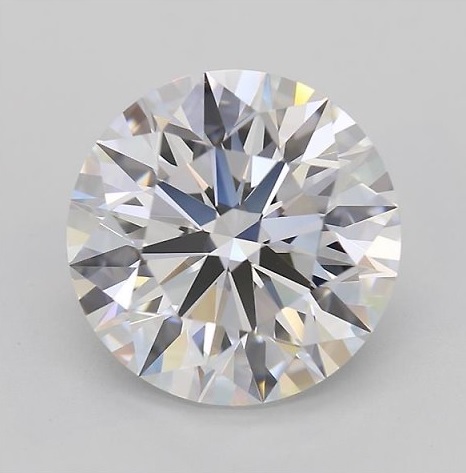A diamond with a relatively small table refers to a diamond where the table facet (the large, flat surface at the top of the diamond) is smaller in proportion to the overall size of the diamond than what is typically seen in other diamonds.
Understanding the Table in a Diamond
The table is the topmost, flat facet of the diamond, and it is usually circular in shape. It’s the largest facet and is positioned at the top of the stone.
The size of the table, along with the crown (the upper part of the diamond), plays a significant role in determining the diamond’s brilliance (how much light it reflects and how it sparkles).
Characteristics of a Diamond with a Small Table
Proportion of the Table
A diamond with a small table typically has a lower table-to-diameter ratio. In other words, the diameter of the table is smaller than in diamonds with more standard proportions.
This means that the facets surrounding the table are larger, which can affect how light enters and exits the diamond, influencing its sparkle.
Aesthetic Impact
A smaller table may result in a more subtle brilliance or a different light performance compared to diamonds with larger tables. It may create more interesting fire (the dispersion of light into colours) but at the cost of some overall brightness.
Cut Quality: The shape and proportions of the diamond are crucial to its overall appearance. A diamond with a small table may look slightly deeper, which could affect the way it sits in the setting and how light reflects from its surface.
Types of Diamonds with Small Tables
Diamonds like the princess cut or old European cut can sometimes feature smaller tables, especially if they are cut with more traditional proportions.
The round brilliant cut typically has a larger table compared to other cuts, so a small table in this cut might indicate a more unique or less conventional style.
Light Performance
In a diamond with a smaller table, light performance can be influenced by the diamond’s cut angles, depth, and crown. The smaller table may reflect light differently, potentially making the diamond seem less brilliant but with more internal sparkle or fire due to the increased number of larger facets.
Impact on Diamond’s Value
The cut and proportions of a diamond are crucial to its value. A smaller table might affect the overall appearance of the diamond, making it seem less brilliant, especially if it compromises the symmetry or light performance of the stone.
A diamond with a smaller table might be considered less desirable if it leads to undesirable proportions, as this could reduce its overall market appeal compared to diamonds with standard table sizes.
Choosing a Diamond with a Small Table:
If you’re considering a diamond with a relatively small table, make sure to focus on other important factors like the cut quality, symmetry, and light performance.
A well-cut diamond with a smaller table can still be beautiful, but it’s important to understand how the proportions affect the overall look of the stone.
Always check the diamond’s grading report from reputable labs like GIA or DCLA to ensure the proportions are in line with your aesthetic preferences and expectations.

